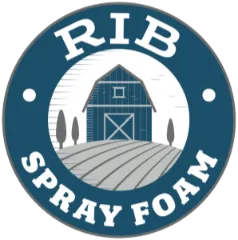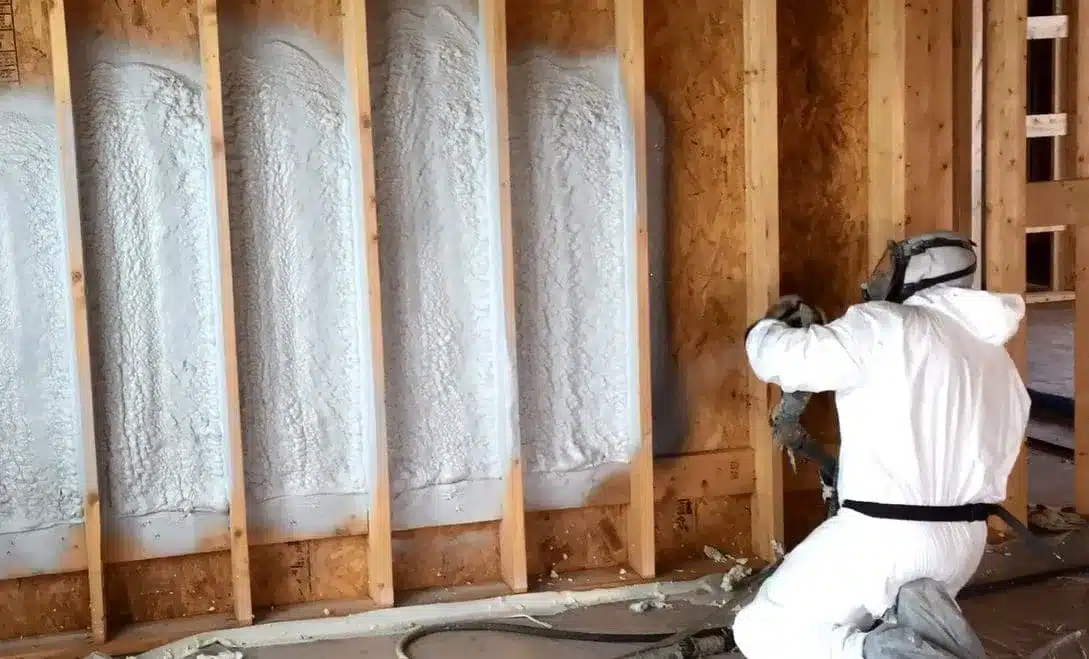When folks try to pick between blown-in and closed-cell insulation, there’s lots to think about. Both are good at keeping buildings warm, but they work real different from each other. Smart building owners look at stuff like how long it’ll last, how much it costs to put in, and what kinda building they got before they decide which one to get.
Looking at both kinds of insulation, you can see they work pretty different. Blown-in stuff has okay heat protection with that R-value of 2.2 to 3.8 per inch, which works fine for attics and walls. Thing is, you might need to fix it up sometimes cause it can sink down and get wet.
The closed-cell foam though, it works way better with that R-value of 6.5 to 7 per inch. Nothing gets through it – not air, not moisture, nothing. It even makes your walls stronger when it hardens up. Sure, it costs more to put in, but lots of people think its worth it cause of how much money they save later.
What Is Blown-In Insulation?
When you get blown-in insulation, its basically just loose stuff they spray into your walls and attic. Sometimes they use fiberglass, other times its cellulose, but either way it goes everywhere it needs to. The machine they use blows it all around so it fills up the spots that are hard to reach. Most of the time, the materials they use come from recycled stuff, which is pretty cool when you think about it. Old houses especially benefit from this kind because you can add it without tearing everything apart.
It don’t cost too much, and workers can put it in real quick. If your trying to save money but still want decent insulation, this might be what you need. The recycled materials make it good for the environment too. But you should know that it ain’t as strong as some other kinds (R-value only goes from 2.2 to 3.8 per inch), and water can mess it up if you’re not careful.
What Is Closed-Cell Spray Foam Insulation?
This stuff is way different it’s like a thick foam that gets hard after they spray it. The foam is made from polyurethane usually, and it keeps heat in better than most anything else (R-value between 6.5 and 7 per inch). Once they spray it, the foam expands and seals up all the little gaps, which stops air and moisture from getting where it shouldn’t be.
There’s lots of good things about closed-cell spray foam that make it worth considering. Your gonna save money on heating and cooling because it works so good. Plus, you won’t have to worry about drafts or water damage like you might with other kinds. The foam stays put and keeps working good for a real long time, even though it costs more at first.
Blown-In vs. Closed-Cell Insulation: Key Differences
Looking at both kinds of insulation, you can see they work pretty different. Blown-in stuff has okay heat protection with an R-value of 2.2 to 3.8 per inch, which works fine for attics and walls. Thing is, you might need to fix it up sometimes cause it can sink down and get wet.
The closed-cell foam though, it works way better with that R-value of 6.5 to 7 per inch. Nothing gets through it – not air, not moisture, nothing. It even makes your walls stronger when it hardens up. Sure, it costs more to put in, but lots of people think its worth it cause of how much money they save later.
Applications and Suitability
Residential Properties
For houses, both kinds can work good but in different ways. Blown-in insulation makes sense if you got an old house or just want to add some to your attic. It’s easy to get it into weird spaces, and it won’t break the bank. But it might not keep all the air from leaking out like you want.
Closed-cell foam works best in new houses or big remodeling jobs. It keeps the heat in better than anything else and stops air from getting where it shouldn’t. Plus, it lasts forever and keeps water out, so people who want something that’ll last pick this kind.
Pole Barns
Big barns need different things than houses do. Blown-in stuff might not work so great cause of how much moisture these buildings get. It helps some with keeping heat in, but it ain’t the best choice for farm buildings.
Closed-cell foam works well for pole barns though. It makes the building stronger and keeps everything dry inside. When the weather gets bad, you want something that can handle it, and this foam does the job right.
Key Considerations for 2025
Energy Efficiency Regulations
The rules about energy saving are getting stricter in Northern Colorado, Eastern Colorado, Southeast Wyoming, and Northeast Denver. More people are picking closed-cell foam cause it works better than what the rules say you need. It keeps everything sealed up tight and saves more energy than almost anything else.
Sustainability
People care about being green these days. Both kinds of insulation got something good going for them. Blown-in uses recycled stuff, which is nice. But closed-cell foam saves so much energy over time that it helps the environment too. You gotta think about what matters most to you when you pick.
Ready to Upgrade Your Insulation? Contact Us Today
If you need help figuring this stuff out, RIB Spray Foam can help you. We know how to do all kinds of insulation jobs, whether its for your house, farm building, or new construction.
- Call Us: (970) 518-2883
- Email Us: [email protected]
- Visit Our Website: https://ribsprayfoam.com/
Our people know what their doing and we’ll make sure you get the right kind of insulation for whatever you need. Just call or email us to talk about what you want to do.
FAQs
Which insulation is more cost-effective?
Blown-in costs less at first, but closed-cell saves more money over time.
Can I use closed-cell spray foam in an existing home?
Yeah, it works great in old houses, especially in crawl spaces and walls that need to be sealed up good.
How does moisture affect these insulations?
Water can get into blown-in stuff and cause problems, but closed-cell foam keeps water out completely.
Is one type of insulation better for soundproofing?
Blown-in actually works better for keeping noise out cause of how dense it is.



